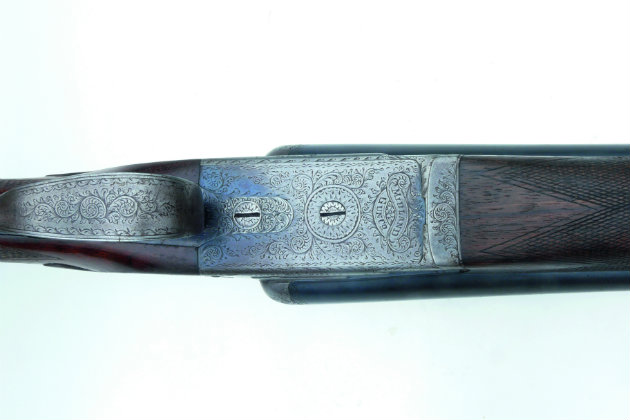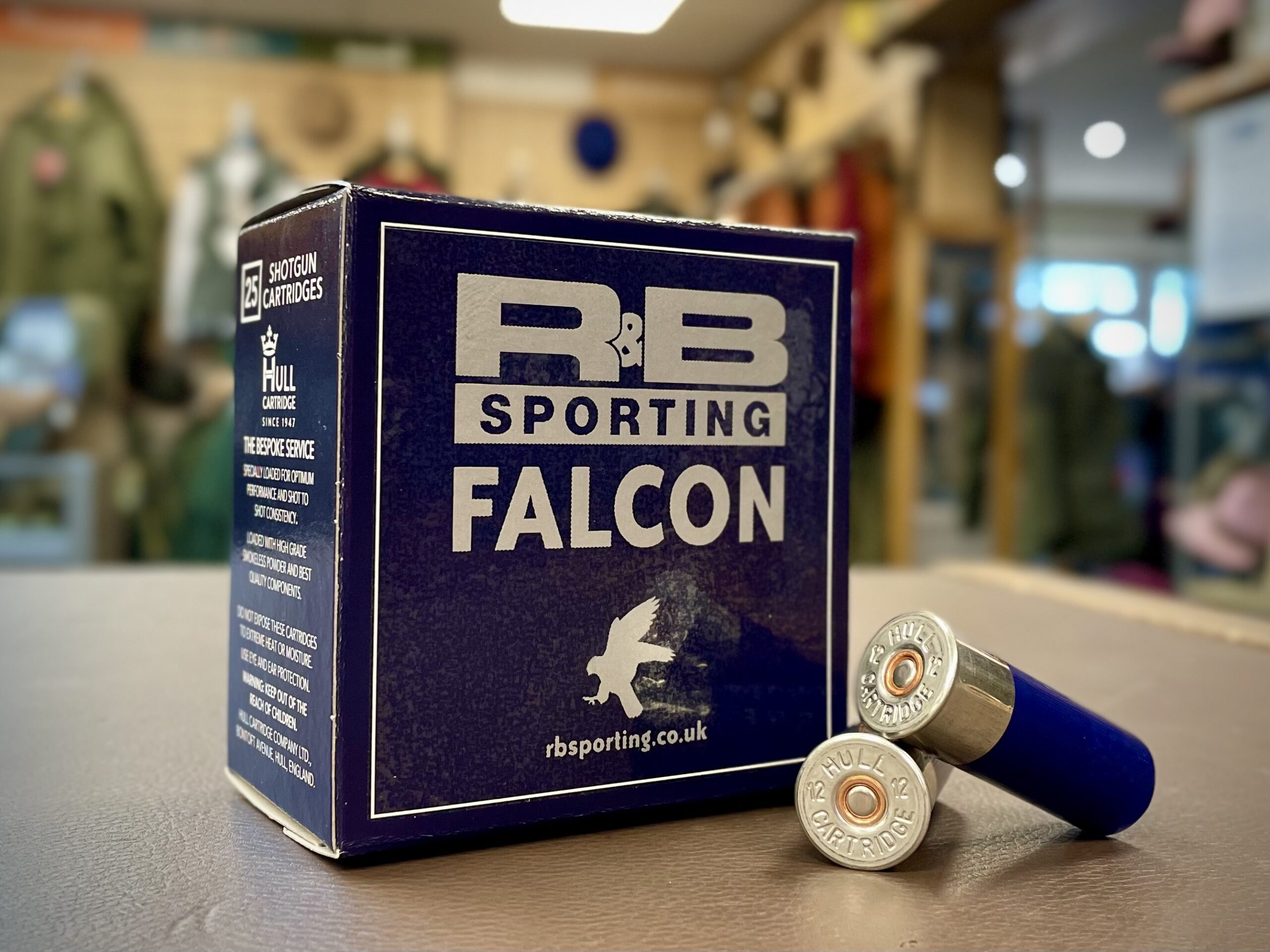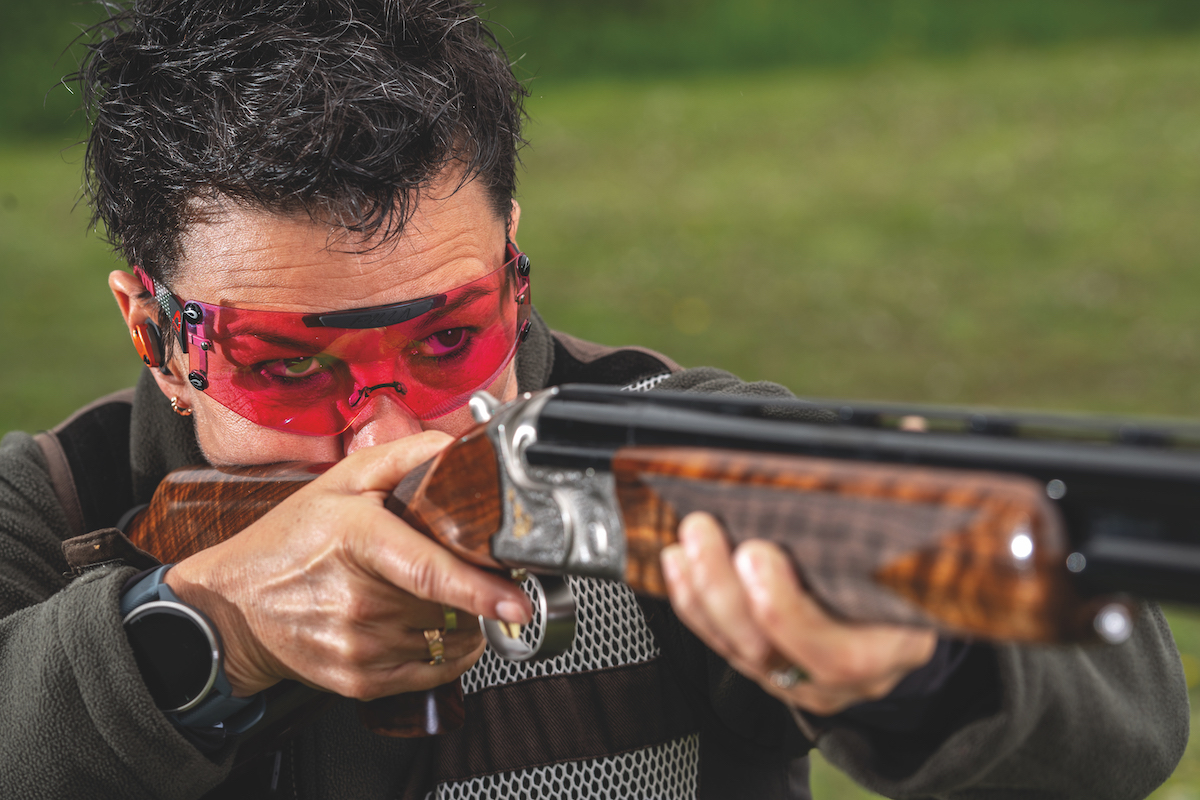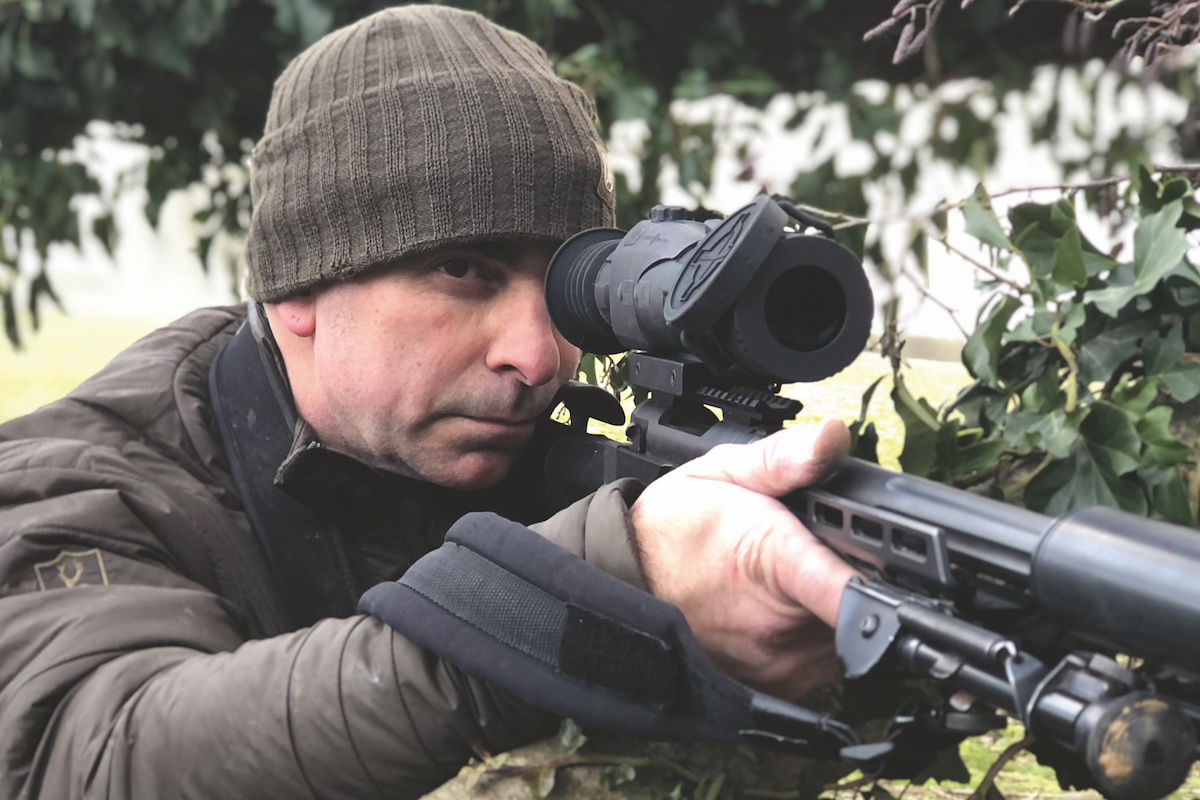How to find bargain British side-by-side shotguns
If you know what to look for, buying second-hand can net you a quality side-by-side shotgun at an affordable price. Lewis Potter looks at what's out there.

This Midland Gun Co shotgun, made circa 1920, has worn blacking but is worth in the region of £1,200
It is not surprising that even those shooters brought up on the modern imported over-and-under sometimes cast an appreciative eye at British side-by-side shotguns, because they are fine and distinctly attractive pieces of work. Usually lighter and handier than most over-and- unders they are for many shooters still the ideal game gun because, with a few exceptions, that was the job they were designed for. While it might be fashionable to laud the over-and-under, the side-by-side can still more than hold its own in the shooting field.

A Joseph Lang 12-bore sidelock ejector gun
Prices for mid-range side-by-side shotguns at an all-time low
For anyone considering buying a side-by-side, mid-range prices are at an all-time low and a second-hand one in good, sound condition often represents quite a bargain. Thirty years ago, sidelock ejector prices started at around £2,000 and a boxlock ejector at £1,000. In some cases, prices have halved and a good non-ejector boxlock can often be picked up for less than £350. As with any second-hand purchase, there are pitfalls to be avoided and consideration needs to be given to make, age, type and condition.
Do you pay for a name?
Much emphasis is placed on the name a gun bears, sometimes to the exclusion of all else, and this can be a mistake. After all, a gun with a recognisable name and sought-after address that has had a great deal of use and perhaps suffered from neglect and lack of maintenance might not, in later years, give such reliable service as one with a little-known name and provincial address that has been subjected to more modest use.
At the famous-name end, most shotguns would have been well looked after and appreciated because they were valuable assets. Having said that, it would not have been unknown for a fine gun of a type or style that was out of fashion or seen as technically behind the times to be handed down to a gamekeeper and used simply as a tool to do a job.

A Purdey 12-bore sidelock ejector gun
When paying extra for a name, it is worth considering that there can be cases of mistaken identity and even fraud, though the latter is now rare. W. Richards, for example, is a maker in its own right but is not the same as Westley richards, the famous Birmingham gunmaker. Goggeswell & Harrison is definitely not Coggswell & Harrison of London and it is always worth remembering Purdey is spelt with an “e”.
Assessing the age and its impact
A British-made shotgun is often much older than you expect, a great many being from the inter-war period and sometimes before World War I. You only have to consider that the sidelock ejector gun was developed at the end of the 19th century and guns of this type made in the first decade of the 20th century look much the same as one made today.

A fine William Powell bar-in-wood lift-up lever 20-bore with original finish, made circa 1880 and worth £1,600
The origins of the boxlock, that mainstay of the UK gun trade, dates back to 1875 and once Damascus barrels were replaced by steel there are only detail differences to ascertain its age.

A “sleeper” – colour case hardening intact and with no wear- was made circa 1930 and is worth from £5,000
The age of a shotgun is of no great consequence; it is always condition that is more important. That item almost of legend, a “sleeper” that has lain unused for most of its life, is an elusive dream for most shooters but they do sometimes appear. To own such a piece is like stepping back in time.
Type of gun and its lock work
The choice comes down to sidelock, boxlock or, for the serious enthusiast, the hammergun. The sidelock would be many shooters’ first choice because it is seen as the most desirable but there are different grades of sidelock from best to basic. At the top “best” means beautifully made, quite often complicated and potentially expensive should a repair be needed.
This can particularly apply to those guns with early single-trigger mechanisms and ejector systems of amazing complexity.
The popular method of identification of lock quality is to count the polished ends of the screw pins visible in the lockplate. Something like a three-pin lock will have a simpler mechanism than, say, a five-pin lock so the latter is regarded as the more desirable. This cunning method of lock quality assessment can fall down, as there are pinless locks of superb quality without pins showing through the lockplate.
There are also false lock plates that have no pins and no function except when added to a boxlock to give the appearance of a sidelock and a bit more glamour. To make things a little more complicated there is the fake, albeit rare, where dummy pins are fitted into a lockplate with simple lock work to give the impression of a top- grade lock.
With the Anson & Deeley boxlock we are on safer ground and generally there are few attempts to make it appear to be anything other than what it is: a design of stunning simplicity that is
still in production today. Variations or improvements include single trigger mechanisms, intercepting safety sears and, of course, ejectors. The double trigger non-ejector gun might now be regarded as old-fashioned but, for many forms of shooting and even the DIY gameshoot, a gun of this type will usually prove quite adequate for the job in hand.
As for the hammergun, especially with Damascus barrels and fuelled by blackpowder, it has made a considerable revival in recent years, though interest has fallen back a bit. Yet a good hammergun will now fetch a better price than many of the modern boxlocks that replaced it.
My personal choice
Personally, and if money were no object. I would consider a single-trigger Westley Richards boxlock ejector gun with scroll- back action body, hand-detachable locks and a shallow pistol-grip stock. Yet apart from that unfulfilled dream, in reality a good, sound double-trigger ejector or non- ejector boxlock gun would suffice for all my shooting needs.
In reality, of course, I will stick with my fine quality Damascus barrelled blackpowder hammergun, secure in the knowledge that smokeless powder superimposed barrel ejector guns are merely a passing fancy.
How to check the gun’s condition
Condition is the most important aspect when you are buying a second-hand gun; more important than make, age or type. It is worth bearing in mind that some guns may have had a century or more of use and suffered economy repairs at a time when their value was only as a working tool.
- Small peening marks made with a hammer showing around the fences and the top edges of the action bar flats indicate old attempts to “tighten” an action. Similarly, hammer marks around the hook and the bite in the rear lump will be due to a bodged and essentially temporary repair intended in the short- term to take the play out of a worn action.
- As a guide, barrels should be clean inside and out and tight on the action with the fore-end removed. When hung by the hook on the finger of one hand, the barrels, when struck with the knuckle of the free hand, should ring like tubular bells: any dullness, or especially a rattle, would indicate a loose rib and an expensive repair.
- With hammerless guns and snap caps fitted, trigger-pulls should be crisp and the hammer strikes heard quite distinctly.
- On an ejector gun, the ejectors should be timed to trip together when the barrels are opened slowly. With a hammergun, cocking the hammers should feel smooth and seem easier as they move towards full cock: a hard pull usually means a replacement and inferior mainspring has been fitted at some time.
- The woodwork should be free from repairs with unworn chequering. A dark appearance at the head of the stock often denotes contamination with gun lubricating oil, which can ruin walnut.

Damaged hook and rear bite by a bodged repair

Hook and lumps are in good condition








